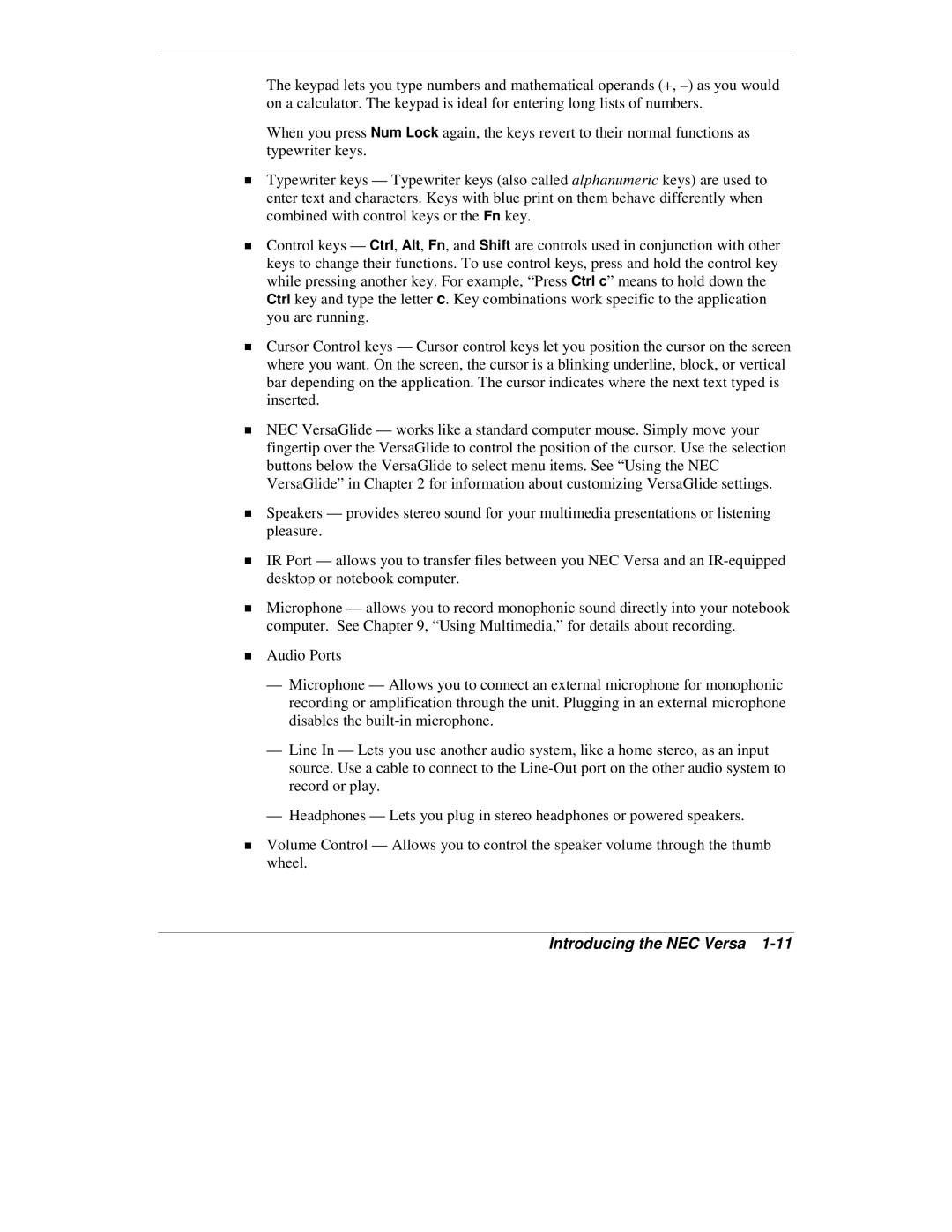
The keypad lets you type numbers and mathematical operands (+,
When you press Num Lock again, the keys revert to their normal functions as typewriter keys.
!Typewriter keys — Typewriter keys (also called alphanumeric keys) are used to enter text and characters. Keys with blue print on them behave differently when combined with control keys or the Fn key.
!Control keys — Ctrl, Alt, Fn, and Shift are controls used in conjunction with other keys to change their functions. To use control keys, press and hold the control key while pressing another key. For example, “Press Ctrl c” means to hold down the Ctrl key and type the letter c. Key combinations work specific to the application you are running.
!Cursor Control keys — Cursor control keys let you position the cursor on the screen where you want. On the screen, the cursor is a blinking underline, block, or vertical bar depending on the application. The cursor indicates where the next text typed is inserted.
!NEC VersaGlide — works like a standard computer mouse. Simply move your fingertip over the VersaGlide to control the position of the cursor. Use the selection buttons below the VersaGlide to select menu items. See “Using the NEC VersaGlide” in Chapter 2 for information about customizing VersaGlide settings.
!
!
!
!
Speakers — provides stereo sound for your multimedia presentations or listening pleasure.
IR Port — allows you to transfer files between you NEC Versa and an
Microphone — allows you to record monophonic sound directly into your notebook computer. See Chapter 9, “Using Multimedia,” for details about recording.
Audio Ports
—Microphone — Allows you to connect an external microphone for monophonic recording or amplification through the unit. Plugging in an external microphone disables the
—Line In — Lets you use another audio system, like a home stereo, as an input source. Use a cable to connect to the
—Headphones — Lets you plug in stereo headphones or powered speakers.
!Volume Control — Allows you to control the speaker volume through the thumb wheel.
